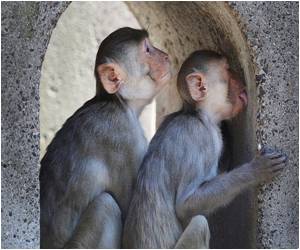
In the study, scientists report that several Simian Immunodeficiency Virus (SIV) prime-boost vaccine regimens have demonstrated partial protection against acquisition of infection by a virulent, tough-to-neutralize SIV strain that is different from the strain used to make the vaccine—a scenario analogous to what people might encounter if an HIV vaccine were available. The experimental vaccine regimens reduced the monkeys' likelihood of becoming infected per exposure to SIV by 80 to 83 percent compared to a placebo vaccine regimen. Further, in those monkeys that did become infected, the experimental vaccine regimens substantially reduced the amount of virus in the blood compared to controls. Now plans are underway for early-stage clinical trials of a human-adapted version of one of the study's prime-boost vaccine combinations.
The best predictor of protection from SIV in the vaccinated monkeys was the presence of antibodies that latched onto the virus surface protein. This finding reinforces what scientists have learned so far about why the first modestly effective HIV vaccine worked in humans and indicates that the HIV surface protein Env is a critical vaccine ingredient. The new research also provides strong evidence that the immune system's mechanism for preventing infection is significantly different from its mechanism for controlling viral replication.
Source-Eurekalert











